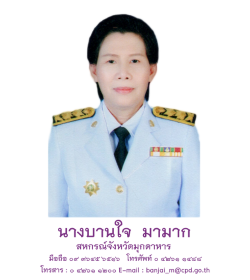×
ยินดีต้อนรับสู่ ฟอรัม Kunena!
อยากรู้จังเลยว่าคุณชอบอะไร รู้จักกับที่นี่ได้อย่างไร และสาเหตุจูงใจอะไรจึงลงทะเบียนเป็นสมาชิกกับทางเรา ช่วยแจ้งให้เราได้ทราบหน่อยได้ไหม
ยินดีต้อนรับสมาชิกใหม่ทุกท่าน และหวังว่าทางเราจะได้รับใช้คุณเยี่ยงนี้ตลอดไป
อยากรู้จังเลยว่าคุณชอบอะไร รู้จักกับที่นี่ได้อย่างไร และสาเหตุจูงใจอะไรจึงลงทะเบียนเป็นสมาชิกกับทางเรา ช่วยแจ้งให้เราได้ทราบหน่อยได้ไหม
ยินดีต้อนรับสมาชิกใหม่ทุกท่าน และหวังว่าทางเราจะได้รับใช้คุณเยี่ยงนี้ตลอดไป
Кракен тор
- HaroldLub
- Topic Author
- Visitor
-

1 month 2 weeks ago #2574687
by HaroldLub
Replied by HaroldLub on topic kra6 cc
Scientists who discovered mammals can breathe through their anuses receive Ig Nobel prize
<a href=https://kraken3yvbvzmhytnrnuhsy772i6dfobofu652e27f5hx6y5cpj7rgyd.cc>kra7 cc
The world still holds many unanswered questions. But thanks to the efforts of the research teams awarded the IG Nobel Prize on Thursday, some of these questions – which you might not even have thought existed – now have answers.
We now know that many mammals can breathe through their anuses, that there isn’t an equal probability that a coin will land on head or tails, that some real plants somehow imitate the shapes of neighboring fake plastic plants, that fake medicine which causes painful side-effects can be more effective than fake medicine without side-effects, and that many of the people famous for reaching lofty old ages lived in places that had bad record-keeping.
kraken3yvbvzmhytnrnuhsy772i6dfobofu652e27f5hx6y5cpj7rgyd.cc
kra7 gl
The awards – which have no affiliation to the Nobel Prizes – aim to “celebrate the unusual, honor the imaginative – and spur people’s interest in science, medicine, and technology” by making “people laugh, then think.”
In a two-hour ceremony as quirky as the scientific achievements it was celebrating, audience members were welcomed to their seats by accordion music, before a safety briefing warned them not to “sit on anyone, unless you are a child,” not to “feed, chase or eat ducks” and to throw their paper airplane safely. There were two “paper airplane deluges” during the ceremony in which the audience attempted to throw their creations – safely – at a target in the middle of the stage.
Among those collecting their prizes was a Japanese research team led by Ryo Okabe and Takanori Takebe who discovered that mammals can breathe through their anuses. They say in their paper that this potentially offers an alternative way of getting oxygen into critically ill patients if ventilator and artificial lung supplies run low, like they did during the Covid-19 pandemic.
American psychologist B.F Skinner was posthumously awarded the peace prize for his work attempting to use pigeons to guide the flight path of missiles, while a European-wide research team was awarded the probability prize for conducting 350,757 experiments to demonstrate that a coin tends to land on the same side it started when it is flipped.
<a href=https://kraken3yvbvzmhytnrnuhsy772i6dfobofu652e27f5hx6y5cpj7rgyd.cc>kra7 cc
The world still holds many unanswered questions. But thanks to the efforts of the research teams awarded the IG Nobel Prize on Thursday, some of these questions – which you might not even have thought existed – now have answers.
We now know that many mammals can breathe through their anuses, that there isn’t an equal probability that a coin will land on head or tails, that some real plants somehow imitate the shapes of neighboring fake plastic plants, that fake medicine which causes painful side-effects can be more effective than fake medicine without side-effects, and that many of the people famous for reaching lofty old ages lived in places that had bad record-keeping.
kraken3yvbvzmhytnrnuhsy772i6dfobofu652e27f5hx6y5cpj7rgyd.cc
kra7 gl
The awards – which have no affiliation to the Nobel Prizes – aim to “celebrate the unusual, honor the imaginative – and spur people’s interest in science, medicine, and technology” by making “people laugh, then think.”
In a two-hour ceremony as quirky as the scientific achievements it was celebrating, audience members were welcomed to their seats by accordion music, before a safety briefing warned them not to “sit on anyone, unless you are a child,” not to “feed, chase or eat ducks” and to throw their paper airplane safely. There were two “paper airplane deluges” during the ceremony in which the audience attempted to throw their creations – safely – at a target in the middle of the stage.
Among those collecting their prizes was a Japanese research team led by Ryo Okabe and Takanori Takebe who discovered that mammals can breathe through their anuses. They say in their paper that this potentially offers an alternative way of getting oxygen into critically ill patients if ventilator and artificial lung supplies run low, like they did during the Covid-19 pandemic.
American psychologist B.F Skinner was posthumously awarded the peace prize for his work attempting to use pigeons to guide the flight path of missiles, while a European-wide research team was awarded the probability prize for conducting 350,757 experiments to demonstrate that a coin tends to land on the same side it started when it is flipped.
Reply to HaroldLub
- LutherSquat
- Topic Author
- Visitor
-

1 month 2 weeks ago #2574695
by LutherSquat
Replied by LutherSquat on topic kra5 gl
Scientists who discovered mammals can breathe through their anuses receive Ig Nobel prize
<a href=https://kraken3yvbvzmhytnrnuhsy772i6dfobofu652e27f5hx6y5cpj7rgyd.cc>kra8 cc
The world still holds many unanswered questions. But thanks to the efforts of the research teams awarded the IG Nobel Prize on Thursday, some of these questions – which you might not even have thought existed – now have answers.
We now know that many mammals can breathe through their anuses, that there isn’t an equal probability that a coin will land on head or tails, that some real plants somehow imitate the shapes of neighboring fake plastic plants, that fake medicine which causes painful side-effects can be more effective than fake medicine without side-effects, and that many of the people famous for reaching lofty old ages lived in places that had bad record-keeping.
kraken3yvbvzmhytnrnuhsy772i6dfobofu652e27f5hx6y5cpj7rgyd.cc
kraken3yvbvzmhytnrnuhsy772i6dfobofu652e27f5hx6y5cpj7rgyd onion
The awards – which have no affiliation to the Nobel Prizes – aim to “celebrate the unusual, honor the imaginative – and spur people’s interest in science, medicine, and technology” by making “people laugh, then think.”
In a two-hour ceremony as quirky as the scientific achievements it was celebrating, audience members were welcomed to their seats by accordion music, before a safety briefing warned them not to “sit on anyone, unless you are a child,” not to “feed, chase or eat ducks” and to throw their paper airplane safely. There were two “paper airplane deluges” during the ceremony in which the audience attempted to throw their creations – safely – at a target in the middle of the stage.
Among those collecting their prizes was a Japanese research team led by Ryo Okabe and Takanori Takebe who discovered that mammals can breathe through their anuses. They say in their paper that this potentially offers an alternative way of getting oxygen into critically ill patients if ventilator and artificial lung supplies run low, like they did during the Covid-19 pandemic.
American psychologist B.F Skinner was posthumously awarded the peace prize for his work attempting to use pigeons to guide the flight path of missiles, while a European-wide research team was awarded the probability prize for conducting 350,757 experiments to demonstrate that a coin tends to land on the same side it started when it is flipped.
<a href=https://kraken3yvbvzmhytnrnuhsy772i6dfobofu652e27f5hx6y5cpj7rgyd.cc>kra8 cc
The world still holds many unanswered questions. But thanks to the efforts of the research teams awarded the IG Nobel Prize on Thursday, some of these questions – which you might not even have thought existed – now have answers.
We now know that many mammals can breathe through their anuses, that there isn’t an equal probability that a coin will land on head or tails, that some real plants somehow imitate the shapes of neighboring fake plastic plants, that fake medicine which causes painful side-effects can be more effective than fake medicine without side-effects, and that many of the people famous for reaching lofty old ages lived in places that had bad record-keeping.
kraken3yvbvzmhytnrnuhsy772i6dfobofu652e27f5hx6y5cpj7rgyd.cc
kraken3yvbvzmhytnrnuhsy772i6dfobofu652e27f5hx6y5cpj7rgyd onion
The awards – which have no affiliation to the Nobel Prizes – aim to “celebrate the unusual, honor the imaginative – and spur people’s interest in science, medicine, and technology” by making “people laugh, then think.”
In a two-hour ceremony as quirky as the scientific achievements it was celebrating, audience members were welcomed to their seats by accordion music, before a safety briefing warned them not to “sit on anyone, unless you are a child,” not to “feed, chase or eat ducks” and to throw their paper airplane safely. There were two “paper airplane deluges” during the ceremony in which the audience attempted to throw their creations – safely – at a target in the middle of the stage.
Among those collecting their prizes was a Japanese research team led by Ryo Okabe and Takanori Takebe who discovered that mammals can breathe through their anuses. They say in their paper that this potentially offers an alternative way of getting oxygen into critically ill patients if ventilator and artificial lung supplies run low, like they did during the Covid-19 pandemic.
American psychologist B.F Skinner was posthumously awarded the peace prize for his work attempting to use pigeons to guide the flight path of missiles, while a European-wide research team was awarded the probability prize for conducting 350,757 experiments to demonstrate that a coin tends to land on the same side it started when it is flipped.
Reply to LutherSquat
- Haroldrurry
- Topic Author
- Visitor
-

1 month 2 weeks ago #2574696
by Haroldrurry
Replied by Haroldrurry on topic kraken3yvbvzmhytnrnuhsy772i6dfobofu652e27f5hx6y5cpj7rgyd onion
Hyundai and GM to work together on developing new cars
<a href=https://kraken3yvbvzmhytnrnuhsy772i6dfobofu652e27f5hx6y5cpj7rgyd.cc>kra6 gl
Hyundai and General Motors (GM) have agreed to look for ways to work together on developing new vehicles, supply chains and technologies in an effort to cut costs and move more quickly.
Global carmakers are under intense pressure to come up with new electric vehicle (EV) and battery technology because they face vehicle emissions regulations around the world. Those research and development efforts could cost tens of billions of dollars.
They’re also facing an onslaught of potential competition from Chinese automakers, particularly EV producers, trying to export their lower-cost models overseas in order to escape a huge oversupply problem at home.
kra7 cc
kraken3yvbvzmhytnrnuhsy772i6dfobofu652e27f5hx6y5cpj7rgyd.cc
South Korea’s Hyundai and America’s GM (GM) said on Thursday they would collaborate on joint product development, manufacturing and future clean energy technologies. They plan to work together on internal combustion, clean-energy, electric and hydrogen vehicles.
The non-binding framework agreement was signed by Hyundai Motor Executive Chair Euisun Chung and GM Chair and CEO Mary Barra.
“Our goal is to unlock the scale and creativity of both companies to deliver even more competitive vehicles to customers faster and more efficiently,” Barra said in the statement.
Including its affiliate Kia, Hyundai Motor is the world’s third-largest automaker by sales, according to Reuters, while GM is currently America’s largest carmaker, having retaken that title from Toyota (TM) in 2022.
“This partnership will enable Hyundai Motor and GM to evaluate opportunities to enhance competitiveness in key markets and vehicle segments, as well as drive cost efficiencies and provide stronger customer value,” Chung said in the statement.
Carmakers are increasingly sealing partnerships as a way of becoming more competitive in a cut-throat industry driven by price wars.
Last year, Nissan and Renault finalized the terms of their revamped alliance, which will focus on developing EVs. GM and Honda (HMC), along with Cruise — GM’s autonomous driving subsidiary — have agreed to create a driverless ride-hailing company in Japan.
<a href=https://kraken3yvbvzmhytnrnuhsy772i6dfobofu652e27f5hx6y5cpj7rgyd.cc>kra6 gl
Hyundai and General Motors (GM) have agreed to look for ways to work together on developing new vehicles, supply chains and technologies in an effort to cut costs and move more quickly.
Global carmakers are under intense pressure to come up with new electric vehicle (EV) and battery technology because they face vehicle emissions regulations around the world. Those research and development efforts could cost tens of billions of dollars.
They’re also facing an onslaught of potential competition from Chinese automakers, particularly EV producers, trying to export their lower-cost models overseas in order to escape a huge oversupply problem at home.
kra7 cc
kraken3yvbvzmhytnrnuhsy772i6dfobofu652e27f5hx6y5cpj7rgyd.cc
South Korea’s Hyundai and America’s GM (GM) said on Thursday they would collaborate on joint product development, manufacturing and future clean energy technologies. They plan to work together on internal combustion, clean-energy, electric and hydrogen vehicles.
The non-binding framework agreement was signed by Hyundai Motor Executive Chair Euisun Chung and GM Chair and CEO Mary Barra.
“Our goal is to unlock the scale and creativity of both companies to deliver even more competitive vehicles to customers faster and more efficiently,” Barra said in the statement.
Including its affiliate Kia, Hyundai Motor is the world’s third-largest automaker by sales, according to Reuters, while GM is currently America’s largest carmaker, having retaken that title from Toyota (TM) in 2022.
“This partnership will enable Hyundai Motor and GM to evaluate opportunities to enhance competitiveness in key markets and vehicle segments, as well as drive cost efficiencies and provide stronger customer value,” Chung said in the statement.
Carmakers are increasingly sealing partnerships as a way of becoming more competitive in a cut-throat industry driven by price wars.
Last year, Nissan and Renault finalized the terms of their revamped alliance, which will focus on developing EVs. GM and Honda (HMC), along with Cruise — GM’s autonomous driving subsidiary — have agreed to create a driverless ride-hailing company in Japan.
Reply to Haroldrurry
- EdwardSOR
- Topic Author
- Visitor
-

1 month 2 weeks ago #2574714
by EdwardSOR
Replied by EdwardSOR on topic kra6.gl
Actress Gemma Arterton says director tried to pressure her to do sex scene
<a href=https://kra11gl.com>kra15.cc
British actress Gemma Arterton has revealed that a director once tried to put pressure on her to film a sex scene, despite the fact that it wasn’t included in the script.
In an interview with British publication the Radio Times, released Tuesday, Arterton said that, whilst on set, the director - who hasn’t been named - instructed her and her co-star to film a sex scene on a bed.
“I said, ‘No, this scene was written for us to be off screen, so you just hear the noises,’” Arterton told the Radio Times. “I’d never have accepted the role if it was going to be filmed.”
kra-5.gl
кракен сайт
The actress said that she was pressured by the director to film the scene, but that she “flat out” refused to take part in it.
Had she been younger at the time, Arterton suggested that she might have been more concerned about being fired for refusing to film it.
“I only felt like I could say that because I was older,” she said.
“When I started acting, there was a lot of nudity – you were just expected to do it. When I was younger I played sexy characters, the girlfriend. As I’ve got older, that’s changed because I’m more successful and can choose the parts I want to play,” she said.
She praised the use of intimacy coordinators in film and television since the #MeToo movement, telling the magazine that “it’s a totally different landscape” now.
“Anything you’re not comfortable with is not going to happen. I’ve heard other actors that are like, ‘I loved it when there was no intimacy coordinator,’ but I definitely think it’s better,” she said.
<a href=https://kra11gl.com>kra15.cc
British actress Gemma Arterton has revealed that a director once tried to put pressure on her to film a sex scene, despite the fact that it wasn’t included in the script.
In an interview with British publication the Radio Times, released Tuesday, Arterton said that, whilst on set, the director - who hasn’t been named - instructed her and her co-star to film a sex scene on a bed.
“I said, ‘No, this scene was written for us to be off screen, so you just hear the noises,’” Arterton told the Radio Times. “I’d never have accepted the role if it was going to be filmed.”
kra-5.gl
кракен сайт
The actress said that she was pressured by the director to film the scene, but that she “flat out” refused to take part in it.
Had she been younger at the time, Arterton suggested that she might have been more concerned about being fired for refusing to film it.
“I only felt like I could say that because I was older,” she said.
“When I started acting, there was a lot of nudity – you were just expected to do it. When I was younger I played sexy characters, the girlfriend. As I’ve got older, that’s changed because I’m more successful and can choose the parts I want to play,” she said.
She praised the use of intimacy coordinators in film and television since the #MeToo movement, telling the magazine that “it’s a totally different landscape” now.
“Anything you’re not comfortable with is not going to happen. I’ve heard other actors that are like, ‘I loved it when there was no intimacy coordinator,’ but I definitely think it’s better,” she said.
Reply to EdwardSOR
- Williamalodo
- Topic Author
- Visitor
-

1 month 2 weeks ago #2574715
by Williamalodo
Replied by Williamalodo on topic kraken2trfqodidvlh4aa337cpzfrhdlfldhve5nf7njhumwr7instad
Long-lost copy of the US Constitution, found in North Carolina filing cabinet, heads to auction
<a href=https://vk7tor.at>kraken at
Historical document appraiser and collector Seth Kaller spreads a broad sheet of paper across a desk. It’s in good enough condition that he can handle it, carefully, with clean, bare hands. There are just a few creases and tiny discolorations, even though it’s just a few weeks shy of 237 years old and has spent who knows how long inside a filing cabinet in North Carolina.
At the top of the first page are familiar words but in regular type instead of the sweeping Gothic script we’re used to seeing: “WE, the People …”
And the people will get a chance to bid for this copy of the US Constitution — the only of its type thought to be in private hands — at a sale by Brunk Auctions on Sept. 28 in Asheville, North Carolina.
kra9gl.net
kraken3yvbvzmhytnrnuhsy772i6dfobofu652e27f5hx6y5cpj7rgyd.onion kraken4qzqnoi7ogpzpzwrxk7mw53n5i56loydwiyonu4owxsh4g67yd.onion kraken5af44k24fwzohe6fvqfgxfsee4lgydb3ayzkfhlzqhuwlo33ad.onion
The minimum bid for the auction of $1 million has already been made. There is no minimum price that must be reached.
This copy was printed after the Constitutional Convention finished drafting the proposed framework of the nation’s government in 1787 and sent it to the Congress of the ineffective first American government under the Articles of Confederation, requesting they send it to the states to be ratified by the people.
It’s one of about 100 copies printed by the secretary of that Congress, Charles Thomson. Just eight are known to still exist and the other seven are publicly owned.
<a href=https://vk7tor.at>kraken at
Historical document appraiser and collector Seth Kaller spreads a broad sheet of paper across a desk. It’s in good enough condition that he can handle it, carefully, with clean, bare hands. There are just a few creases and tiny discolorations, even though it’s just a few weeks shy of 237 years old and has spent who knows how long inside a filing cabinet in North Carolina.
At the top of the first page are familiar words but in regular type instead of the sweeping Gothic script we’re used to seeing: “WE, the People …”
And the people will get a chance to bid for this copy of the US Constitution — the only of its type thought to be in private hands — at a sale by Brunk Auctions on Sept. 28 in Asheville, North Carolina.
kra9gl.net
kraken3yvbvzmhytnrnuhsy772i6dfobofu652e27f5hx6y5cpj7rgyd.onion kraken4qzqnoi7ogpzpzwrxk7mw53n5i56loydwiyonu4owxsh4g67yd.onion kraken5af44k24fwzohe6fvqfgxfsee4lgydb3ayzkfhlzqhuwlo33ad.onion
The minimum bid for the auction of $1 million has already been made. There is no minimum price that must be reached.
This copy was printed after the Constitutional Convention finished drafting the proposed framework of the nation’s government in 1787 and sent it to the Congress of the ineffective first American government under the Articles of Confederation, requesting they send it to the states to be ratified by the people.
It’s one of about 100 copies printed by the secretary of that Congress, Charles Thomson. Just eight are known to still exist and the other seven are publicly owned.
Reply to Williamalodo
- Johnnieroack
- Topic Author
- Visitor
-

1 month 2 weeks ago #2574826
by Johnnieroack
Replied by Johnnieroack on topic kra4.cc
Study shows how the pandemic may have affected teens’ brains
<a href=https://kra11-gl.com>kraken onion
The pandemic’s effects on teenagers were profound — numerous studies have documented reports of issues with their mental health, social lives and more.
Now, a new study suggests those phenomena caused some adolescents’ brains to age much faster than they normally would — 4.2 years faster in girls and 1.4 years faster in boys on average, according to the study published Monday in the journal Proceedings of the National Academy of Sciences.
By being the first to contribute details on aging differences by sex, the study adds to the existing body of knowledge provided by two previous studies on the Covid-19 pandemic and accelerated brain aging among adolescents.
kra12gl.cc
kra2.gl
“The findings are an important wake-up call about the fragility of the teenage brain,” said senior study author Dr. Patricia K. Kuhl, the Bezos Family Foundation Endowed Chair in Early Childhood Learning and codirector of the Institute for Learning and Brain Sciences at the University of Washington in Seattle, via email. “Teens need our support now more than ever.”
Significant socioemotional development occurs during adolescence, along with substantial changes to brain structure and function. The thickness of the cerebral cortex naturally peaks during childhood, steadily decreases throughout adolescence and continues to decrease through one’s lifespan, the authors wrote.
The researchers originally intended to track ordinary adolescent brain development over time, starting with MRIs the authors conducted on participants’ brains in 2018. They planned to follow up with them for another scan in 2020.
The pandemic delayed the second MRI by three to four years — when the 130 participants based in Washington state were between ages 12 and 20. The authors excluded adolescents who had been diagnosed with a developmental or psychiatric disorder or who were taking psychotropic medications.
<a href=https://kra11-gl.com>kraken onion
The pandemic’s effects on teenagers were profound — numerous studies have documented reports of issues with their mental health, social lives and more.
Now, a new study suggests those phenomena caused some adolescents’ brains to age much faster than they normally would — 4.2 years faster in girls and 1.4 years faster in boys on average, according to the study published Monday in the journal Proceedings of the National Academy of Sciences.
By being the first to contribute details on aging differences by sex, the study adds to the existing body of knowledge provided by two previous studies on the Covid-19 pandemic and accelerated brain aging among adolescents.
kra12gl.cc
kra2.gl
“The findings are an important wake-up call about the fragility of the teenage brain,” said senior study author Dr. Patricia K. Kuhl, the Bezos Family Foundation Endowed Chair in Early Childhood Learning and codirector of the Institute for Learning and Brain Sciences at the University of Washington in Seattle, via email. “Teens need our support now more than ever.”
Significant socioemotional development occurs during adolescence, along with substantial changes to brain structure and function. The thickness of the cerebral cortex naturally peaks during childhood, steadily decreases throughout adolescence and continues to decrease through one’s lifespan, the authors wrote.
The researchers originally intended to track ordinary adolescent brain development over time, starting with MRIs the authors conducted on participants’ brains in 2018. They planned to follow up with them for another scan in 2020.
The pandemic delayed the second MRI by three to four years — when the 130 participants based in Washington state were between ages 12 and 20. The authors excluded adolescents who had been diagnosed with a developmental or psychiatric disorder or who were taking psychotropic medications.
Reply to Johnnieroack
Time to create page: 3.650 seconds












